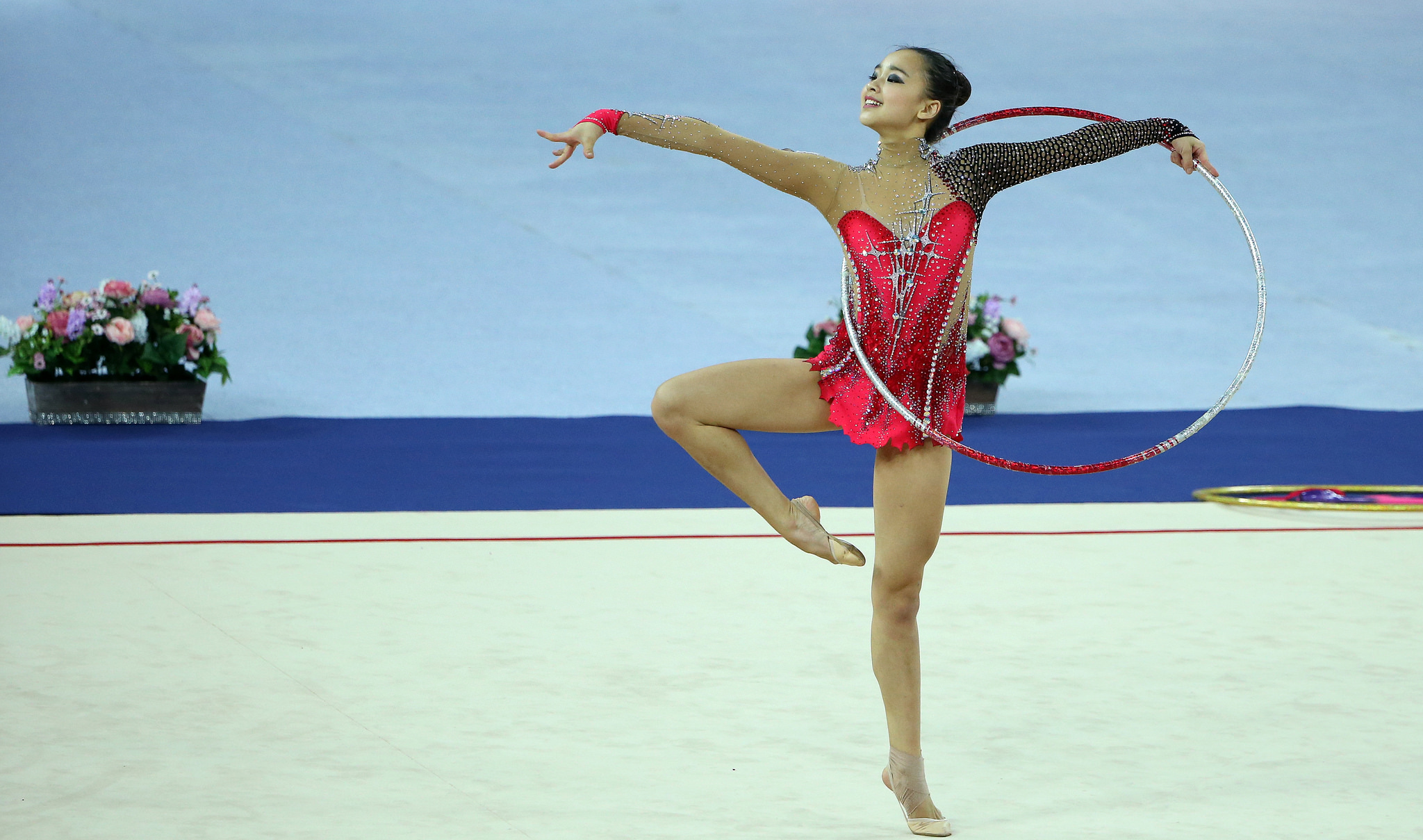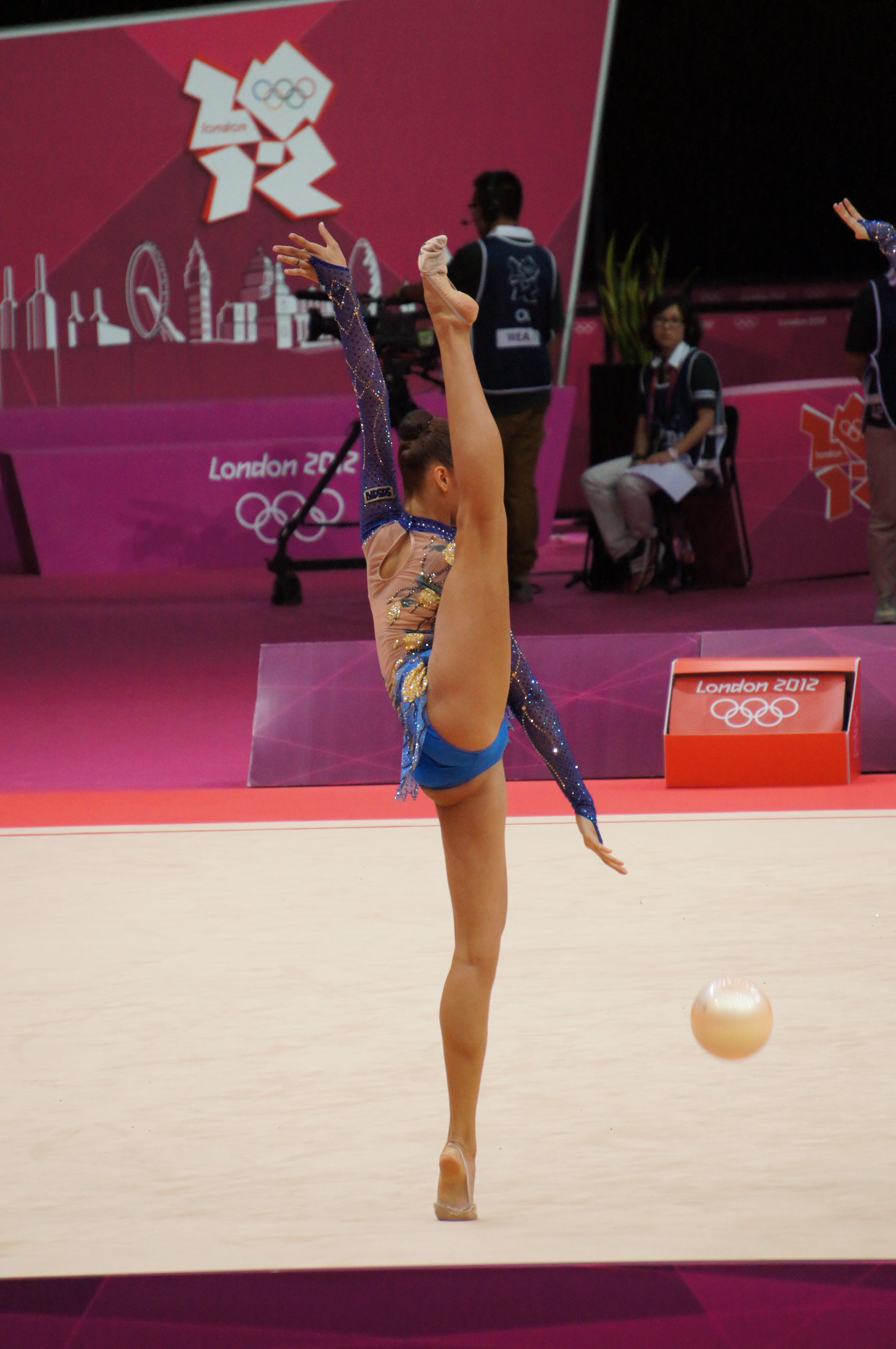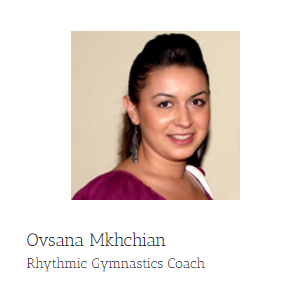Ovsanna Mkhchian: Gymnastics Program Director

Ovsanna Mkhchian
To continue our preparation for the Rhythmic Gymnastics (RG) in the upcoming Olympic Games, we asked RG Coach and Judge Ovsanna Mkhchian some basic questions to help us understand the sport.
Ovsanna is the sole supervisor of 40 rhythmic gymnasts, and Program Director of Ararat Rhythmic Gymnastics in Los Angeles, CA. This has been her career for 14 years.
(They are seeking an additional staff member, so if you are interested, please contact Ovsanna atovsanna.mkhchian@gmail.com.)
Rhythmic Gymnastic hoops seem to be made from a very flexible plastic – how are you determining what size and material to order for each gymnast?
Size depends on gymnast’s height. Different manufacturers have different quality hoops. There are different weights and sizes to choose from depending on the gymnast’s age, height, and level of professional competitiveness.
We understand that sometimes hooping is not an event? Can you explain how it is determined which events are competed each year?
Every 4 years the FIG gymnastics federation releases new apparatus rotations.
Again (it is) shuffled around by gymnasts’ competitive level in (the) initial stages. It is kept on a rotation so gymnasts experience a cycle of different apparatus each competitive year.
(The apparatus are also presented to the gymnasts) in a pattern that aids in their development as athletes... for example, there are no clubs in earlier years at competitions.
(Journalist's additional notes:
- The clubs are heavy, and more difficult to manage since there are two.
- On viewing the schedule on the FIG website, the apparatus competed are posted through 2024 – and fortunately, each quad will include hoop until then!)
Will there be a Hoop Medalist in Rio 2016? Or are the only medals for the all-around?
(“All-around” in gymnastics means the total points a gymnast scored among all the apparatus (hoop, clubs, ball, ribbon, and rope, when it is competed) combined. “Event finals” are each apparatus specifically.)
The Olympics do not include event finals. The World Championships do. You can check out FIG website for apparatus rotations by year. Typically (at meets other than the Olympics) awards are given for every apparatus, and also for all around... with 4 apparatuses competed per gymnast.
Can you tell us about the choreographic process?
Connections are what make it a good choreography. There are required elements always to be incorporated.
Do rhythmic gymnasts ever draw inspiration from flow, native, street, or circus style hoopers?
RG takes inspiration from all forms of art in my opinion - all forms of dance especially.
For people interested in learning to coach, does rhythmic have educational events for coaches through USA Gymnastics?
Yes, it does. We belong to USA gymnastics... check their website too... there is an RG tab.
How much time (percentagewise) is spent on hoop skills of a rhythmic gymnast’s training?
Good coaches train on all apparatuses equally.
The intricate leotards! How much does a typical one cost? Are there requirements for dress code?

Yes there are requirements... they can range from a couple hundred to couple thousand. They can't be strappy... they also can't be too short, too long, too flowy etc.
We’ve noticed almost every gymnast has the same hairstyle - are they required to wear their hair in a bun?
Not in a bun... just out of their face. Buns are most neat in ensuring they don't obstruct the gymnast’s ability to toss, catch, roll, etc.
Where do rhythmic gymnasts acquire hoop tape? Are they allowed grip tape on the inside, and do any use it? Are there any other rules about tape?
Many vendors sell the tape. I would think grip tape would not be allowed and in most instances I can see it becoming a hindrance actually. Gymnasts may use untaped hoops if they please.
As hoop dancers, we understand the precision and mastery over the apparatus - but the flexibility of these athletes is harder to comprehend! Let’s take an example of a gymnast who raises her leg in a split and holds her knee against her face. Is she demonstrating more strength or flexibility in this moment? Is it that her opposing muscles, the quadriceps, are just so strong they can push past the resistance of the hamstring? Or is it just that there isn't resistance because her hamstring has been stretched so long? How much can we alter our natural flexibility?

There is only so much we can influence natural flexibility.... Hard work pays off but you need some natural talent.
Often strength does compensate for lack of flexibility, but that can only go so far competitively speaking. As you know there is so much talent around the world. One needs both to be successful!
In my opinion, you cannot go too far in the sport without strength or flexibility, but you can use your strength to reach new heights. You can fake flexibility to a certain extent but you can't fake strength. Make sense?
You need both together to be truly successful. It's not just your legs... your entire body needs to work in coordination for success.
Thanks so much for answering our questions Ovsanna, we deeply appreciate your time!
About Our Writer
Lizzy Ellis is a Certified Hoop Love Coach, USA Gymnastics Instructor Member, and Infinite Circles Community Admin. You can read more of her thoughts on beautiful movement at Flying Trapeze Blog.

